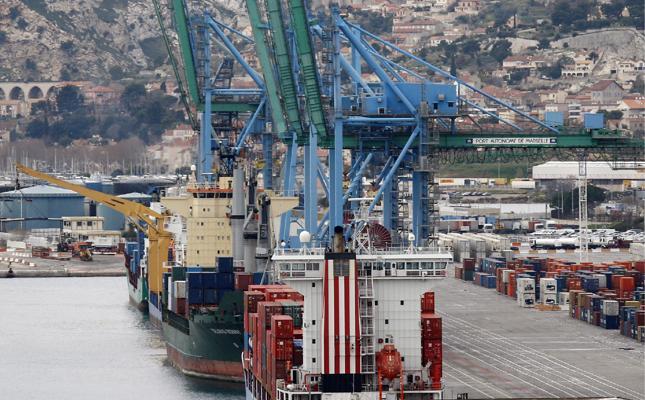The port of Marseille is getting ready to receive ships of up to 20,000 TEU. The Seayard Fos terminal has just ordered a crane to operate up to 24 rows of containers, which is precisely what most units in use today require, such as the MSC Opera. MSC is the majority shareholder of the Focean terminal with 50 percent of the shares, together with Maersk (40 percent) and Cosco (10 percent) or more accurately, China Cosco, after the merger with China Shipping.

The acquisition of Seayard comes only days after that of competitor EUROFOS (joint venture between DP World and Terminal Link of the CMA CGM Group), which ordered two cranes that can carry up to 26 rows of containers at the end of 2015. The EUROFOS cranes will begin to be assembled next February and will be the largest in the world in their category. Both EUROFOS and Seayard cranes (which already has two able to carry 22 rows of containers) will be built by the Spanish company Paceco.
And so the company has launched its challenge to VTE, the Genoese terminal that in 2016 will be equipped with four new cranes for mega-containers. The four VTE cranes, ordered last year from the Chinese manufacturer ZPMC in Shanghai, can operate up to 25 rows of containers. Although neither Genoa nor Marseille are hoping to get the largest giants, which are intended for trade between the Far East and Northern Europe. Official statements in this regard are based on prudence. “This crane,” said Claus Elleman-Jensenm, Seayard CEO, “will be able to handle ships up to 20,000 TEU, although we do not think we will receive them in Fos anytime soon.”
In past years, however, the growth of naval gigantism has been faster than expected and terminal operators prefer not to be caught by surprise. The rush of several operators to buy vehicles with a large enough capacity, in a sector in which investments are always stretched out not to erode margins, indicates that there is hope to use them to their full capacity soon. It should therefore be recorded that in 2016, two of the largest final destination ports of the western Mediterranean, Marseille and Genoa, will become capable, on paper, of accommodating ships up to 20,000 TEU.
The strategies of large shipping companies, such the partners of the two Marseille terminals, are still being developed. For the largest one, Maersk, cut backs started a few months ago, and recently the same trend has started in Genoa. The Italian agency has cut six jobs in the finance department and the workers responded by opening a state of agitation. But the Danish company is not only reducing employment. According to Alphaliner, in 2015 the company has cut 30% of its fleet, and also of significance is the drastic intervention that was called for last summer for the container shipping industry, both from Alphaliner and Drewry. Stig Frederiksen, an analyst at Nordea Markets, pointed out that other companies have not taken such dramatic measures yet, “Maersk took the lead. It was the first to start acknowledging the serious situation the sector is in.”
Source: www.themeditelegraph.com